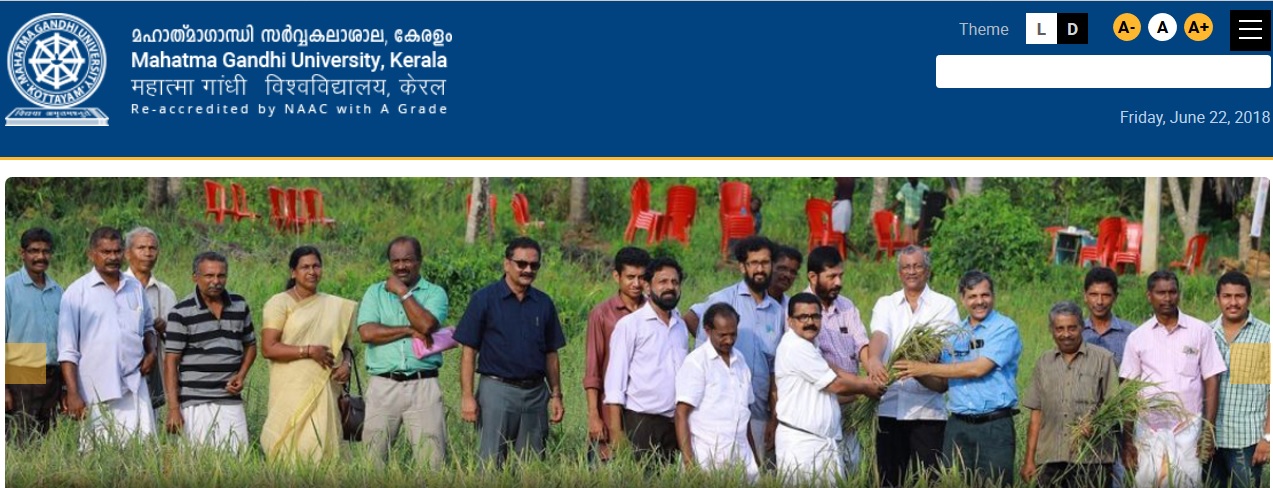MECCI104 Advanced Optical Communication Systems M.Tech Model Question Paper : mgu.ac.in
Name of the College : Mahatma Gandhi University
Department : Communication Engineering
Subject Code/Name : MECCI 104/Advanced Optical Communication Systems
Sem : I
Website : mgu.ac.in
Document Type : Model Question Paper
Download Model/Sample Question Paper : https://www.pdfquestion.in/uploads/mgu.ac.in/5057-MECCI%20104%20Advanced%20optical%20Communication%20Systems.pdf
MGU Advanced Optical Communication Question Paper
M.TECH Degree Examination :
Model Question paper
Branch: Electronics and Communication Engineering
Related : MGU MECVE106-4 Modeling of Embedded Systems M.Tech Model Question Paper : www.pdfquestion.in/5065.html
Specialization: Advanced Communication and Information Systems
First Semester
MECCI 104 Advanced Optical Communication Systems
(Regular – 2013 Admission Onwards)
Answer all Questions . :
All questions carry equal marks
Time : 3hrs
Max Marks:100
1. a) Differentiate between step index and graded index fiber (5)
b) Explain different types of fiber losses (8)
c) Explain dispersions in single mod fiber in detail (12)
OR
2. a) Define bandwidth and rise time of photo detectors (5)
b)Explain optical receiver sensitivity (8)
c) Consider a 0.8µm receiver with a silicon p-i-n photodiode. Assume 20MHz bandwidth, 65% quantum efficiency, 1nA dark current, 8pF junction capacitance, and 3dB amplifier noise figure. The receiver is illuminated with5µW optical power.
Determine the RMS noise current due to short noise, thermal noise, and amplifier noise. Also calculate the SNR
3. a) What are the different types of light wave system architecture? (5)
b)Explain about power budget and rise time budget (8)

c) A 1.3-µm long haul light wave system is designed to operate a 1.5Gbps. It is capable of coupling 1 mW of average power into the fiber. The 0.5-dB/km fiber cable loss includes splice losses.
The connectors at each end have 1dB losses. The InGaAs p-i-n receiver has a sensitivity of 250 nW. Make the power budget and estimate the repeater spacing
OR
4. a) A distribution network uses an optical bus to distribute the signal to 10 users. Each optical tap couples 10% of the power to the user and has 1-dB insertion loss. Assuming that thestation 1 transmits 1mW of power over the optical bus. Calculate the power received bythe stations 8,9, and 10.
b)What are the design guidelines associated with lightwave systems? (8)
c)Explain Long-Haul systems? (12)
5. a) Explain optical amplifier spectrum and bandwidth (5)
b)Explain principle and characteristics of Raman amplifier (8)
c) Explain EDFA (12)
OR
6. a) What are the needs for dispersion management (5)
b)What is pre-compensation technique ? Explain any Two techniques (8)
c) What is the dispersion-limited transmission distance for 1.55-µm lightwave system making use of direct modulation at 10Gbps? Assume that frequency chirping broadens the Gaussian-shape pulse spectrum by a factor of 6 from its transform-limited width.
Use D=17 ps/(km-nm)for fiber dispersion?How much improvement in the dispersion- limited transmission distance is expected if an external modulator is used in pace of direct modulator?
7. a) Give the mathematical description of soliton employing non linearschrodinger equation.
b) Explain white and dark solitons (8)
c) Explain soliton based communication systems (12)
OR
8. a) Briefly explain about dispersion decreasing fiber (5)
b)How timing jitter is controlled in optical amplifier? (8)
c) What are the different types of timing jitter in high speed soliton communication? (12)
Module I
Light wave system components : Optical fibers, wave propagation, single mode and multi mode fibers, dispersion in fibers.
Optical transmitters : LED and semiconductor LASER, characteristics, transmitter design.
Optical receivers : Common photo detectors. receiver design, receiver noise and sensitivity.
Module II
Light wave system architecture : Design, loss limited and dispersion limited, power budget and rise time budget, long haul systems, performance limiting factors, terrestrial light wave system, under sea light wave systems.
Module III
Optical amplifiers : Gain spectrum, amplifier noise, amplifier specifications, semiconductor optical amplifiers, amplifier design characteristics, pulse amplifier, system application, Raman amplifiers, EDFA, gain spectrum, amplifier noise, multichannel amplification, distributed gain amplifier, dispersion management, pre-compensation schemes, post compensation technique, dispersion compensation fibers.
Module IV
Soliton Systems : Fiber solitons, nonlinear Schrodinger equation, bright soliton, dark solitons, soliton based communications, information transmission with solitons, soliton interaction, loss managed soliton, dispersion managed solitons, impact of amplifier noise, high speed soliton system.
Reference :
1. Govind P. Agrawal, “Fiber Optic Communication System”, John Wiley and Sons, 2003
2. J Diggonet, “Rare Earth Doped Fiber Lasres and Amplifiers”
3. Hasegawa, “Solitons in Optical Communications”